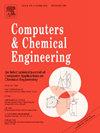Sustainable recovery of Cu, Ag and Au from the waste printed circuit boards and process optimisation by machine learning
IF 3.9
2区 工程技术
Q2 COMPUTER SCIENCE, INTERDISCIPLINARY APPLICATIONS
引用次数: 0
Abstract
The sustainable supply of metals, especially precious metals, is critical for the manufacturing of the electronic chips used in the printed circuit boards of mobile phones. At the same time, the large volume of waste printed circuit boards (WPCBs) of mobile phones is a serious environmental issue that requires developing sustainable processes for the recovery of metals and to handle the waste in a resourceful manner. To address the two challenges of sustainable material supplies for chip manufacturing and waste management of WPCBs of mobile phones, we present a machine learning (ML) powered process optimization framework for the sustainable recovery of Cu, Ag and Au from the WPCBs. The process employs NH4Cl and low-temperature roasting for the recovery of metals for designed experimental conditions. The input-output data obtained from the experiments is deployed to make approximations of the metal recovery profiles for Cu, Ag and Au by Gaussian Process (GP) models. The GP models trained for the three metals are embedded in the objective function of an optimisation problem for determining the optimised experimental conditions that maximise the recovery of the metals from the WPCBs. The verification of optimized experimental conditions, obtained after solving the optimization problem, in made in the lab that confirms 99 %, 90 % and 80 % respectively recovery of Cu, Ag and Au from the WPCBs. This demonstrates the effectiveness of the developed ML powered analysis workflow that improves the material utilisation efficiency and supports sustainable AI by considering material requirements for chip manufacturing and waste management.
从废弃印刷电路板中可持续回收铜、银和金,并通过机器学习优化工艺
金属,特别是贵金属的可持续供应对于制造用于移动电话印刷电路板的电子芯片至关重要。与此同时,大量废弃的移动电话印刷电路板(wpcb)是一个严重的环境问题,需要开发可持续的金属回收过程,并以合理的方式处理废物。为了解决芯片制造的可持续材料供应和手机wpcb的废物管理这两个挑战,我们提出了一个机器学习(ML)驱动的过程优化框架,用于从wpcb中可持续回收Cu, Ag和Au。在设计的实验条件下,采用氯化铵和低温焙烧回收金属。利用实验得到的输入输出数据,利用高斯过程(GP)模型对Cu、Ag和Au的金属回收率曲线进行了近似计算。为三种金属训练的GP模型嵌入到优化问题的目标函数中,以确定优化的实验条件,最大限度地从wpcb中回收金属。对优化后的实验条件进行了验证,实验结果表明,从wpcb中Cu、Ag和Au的回收率分别为99%、90%和80%。这证明了开发的机器学习驱动分析工作流程的有效性,通过考虑芯片制造和废物管理的材料要求,提高了材料利用效率,并支持可持续的人工智能。
本文章由计算机程序翻译,如有差异,请以英文原文为准。
求助全文
约1分钟内获得全文
求助全文
来源期刊

Computers & Chemical Engineering
工程技术-工程:化工
CiteScore
8.70
自引率
14.00%
发文量
374
审稿时长
70 days
期刊介绍:
Computers & Chemical Engineering is primarily a journal of record for new developments in the application of computing and systems technology to chemical engineering problems.
 求助内容:
求助内容: 应助结果提醒方式:
应助结果提醒方式:


